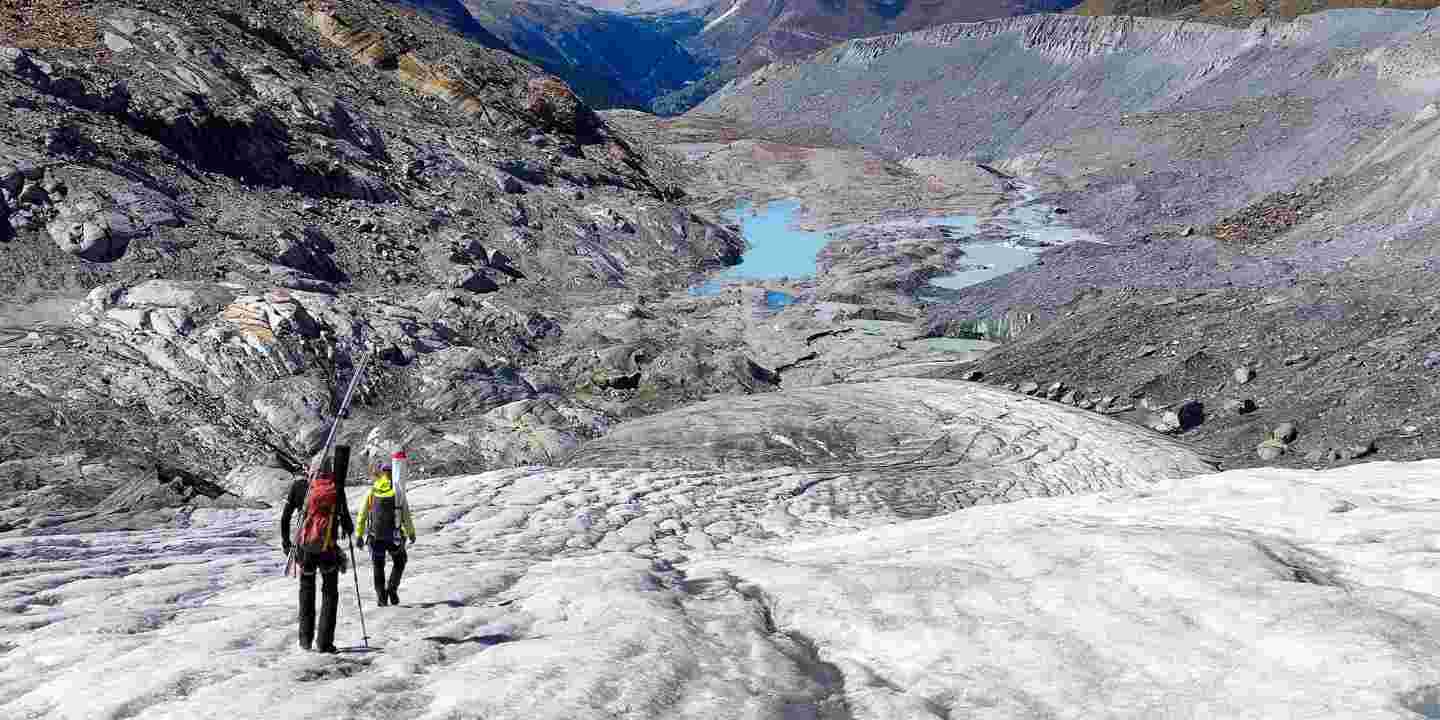Glaciers around the world are shrinking at an alarming rate, threatening sea-level rise, water availability, biodiversity, and ecosystem stability. A new study led by researchers from ETH Zurich and Vrije Universiteit Brussel and published in The Cryosphere provides the most comprehensive projections to date, projecting the future of over 200,000 glaciers—excluding those in Greenland and Antarctica—under the newest climate scenarios.
“By modeling glacier evolution throughout the 21st century under various climate scenarios, we found stark differences in outcomes depending on future emission levels,” explains lead author Harry Zekollari, a former postdoc at the Laboratory of Hydraulics, Hydrology and Glaciology (VAW) at ETH Zurich and now a professor at Vrije Universiteit Brussel.
“In the most optimistic, low-emission scenario, glaciers are expected to lose 25% to 29% of their mass by 2100. However, under a high-emission scenario, that figure rises significantly, with up to 46% to 54% of global glacier mass projected to vanish.”
The study reveals that glacier loss will vary significantly by region. Glaciers in the European Alps are among the most vulnerable, with projections suggesting more than 75% volume loss—and possible complete disappearance—under high-emission scenarios. Meanwhile, polar regions such as Arctic Canada, Iceland, and Svalbard are expected to retain a larger part of their glacier mass through the end of the century, though they, too, will face considerable loss.
“The study represents an improvement compared to prior assessments, and projects slightly higher losses than those included in recent IPCC reports,” says Daniel Farinotti, head of ETH’s Professorship of Glaciology and co-author of the study.
“The projections rely on the most recent models, calibrated with detailed glacier-specific observations, rather than regionally aggregated data. This approach offers a clearer picture of individual glacier changes, which can be relevant for the management of local water resources, natural hazards, and glacier-fed hydropower plants.”
Looking ahead, advancements in satellite monitoring and glacier modeling approaches are expected to enhance the accuracy of glacier projections. These tools will offer valuable new data to inform the science community’s understanding of glaciers’ response to climate change and improve planning for affected regions worldwide.
Reference: Harry Zekollari et al, Twenty-first century global glacier evolution under CMIP6 scenarios and the role of glacier-specific observations, The Cryosphere (2024). DOI: 10.5194/tc-18-5045-2024
